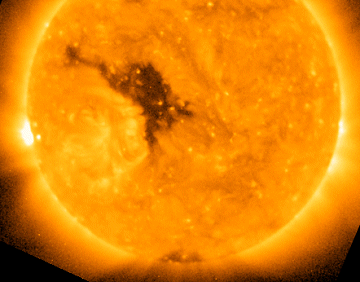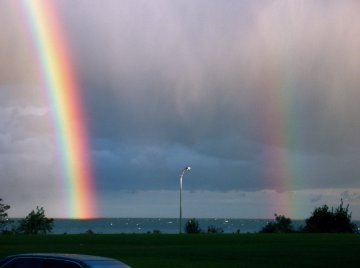 Autumn is here, and it's a wonderful time for stargazing. Find out what's up from Spaceweather PHONE.
Autumn is here, and it's a wonderful time for stargazing. Find out what's up from Spaceweather PHONE.
METEOR SHOWER: Earth is about to orbit through the ancient tail of Halley's Comet, producing a mild but pretty shower of meteors called "the Orionids." The best time to look is before sunrise on Saturday, Oct. 21st. Stay tuned for more information as the weekend approaches.
CORONAL HOLE: There's a gaping black hole on the sun today, shown here in an X-ray image from NOAA's GOES-13 satellite:

The technical term is "coronal hole." It's a place in the sun's atmosphere where magnetic fields open up and allow solar wind to escape. A stream of solar wind flowing from this hole should reach Earth on Oct. 20th, possibly sparking a geomagnetic storm. Sky watchers, be alert for auroras!
TWIN PILLARS: "This morning at 7:30 AM, my roommate called me on her way to work and told me to look outside," says Julia Kester of the State University of New York in Oswego. "What I saw was absolutely beautiful: not one, but two rainbows that looked as if they were shooting out of Lake Ontario and arching over the campus."

Photo credit: Julia Kester in Oswego, New York.
It's an extraordinary picture, but not as rare as you might suppose. The fact is, all rainbows come in pairs. The bright primary bow (left in Julia's photo) is caused by sunlight reflected once by falling raindrops. The dimmer secondary bow (right) is caused by sunlight reflected twice. The secondary bow is usually so dim we fail to notice it, but it is always there. Advice: Whenever you see one rainbow, look for two!

